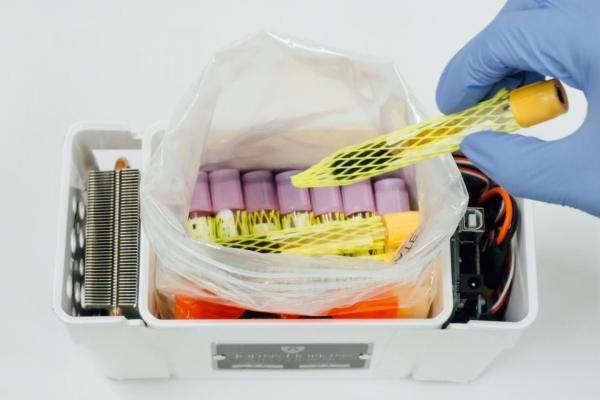When it comes to medical issues as they relate to connecting out-of-the-way rural areas to cities, there remains a long list of challenges. But for one of those – transporting delicate medical samples over great distances – significant, record-setting progress is being made. And it's being done with the use of drones.
Researchers from Johns Hopkins University report that they've set a new delivery distance record by using medical drones to safely deliver human blood samples 161 miles, while ensuring the contents "were viable for laboratory analysis after landing."
This recent achievement continues to bridge the gap between larger hospitals in urban areas and remote areas, especially where land transport is challenging, treacherous or simply impossible.
"Drones can operate where there are no roads, and overcome conditions that disable wheeled vehicles, traffic and other logistical inefficiencies that are the enemy of improved, timely patient diagnoses and care," said Dr. Timothy Amukele, M.D., Ph. D, assistant professor of pathology at the Johns Hopkins University School of Medicine and the paper's senior author. "Drones are likely to be the 21st century's best medical sample delivery system."
The findings of the study were announced today and published Sept. 5 in the American Journal of Clinical Pathology.
Here's how the study, which used 84 pairs of blood samples, was conducted. All were taken to an Arizona airfield, outside Tucson. One of each pair was held in a temperature-controlled vehicle, while the other 84 samples, over a series of flights, were flown by drone from the airfield and then back to it, covering 161 miles in the boomerang-style trip.
The drone's onboard compartment, designed by the Johns Hopkins team, was temperature controlled for the three-hour flight. The average temperature of the drone-flown samples was 76.6o F, as compared 81.1o F for the vehicle-housed samples.
At the completion of the drone flights, all the samples were driven 62 miles to the Mayo Clinic in Scottsdale for testing, where 17 common procedures were conducted. "Flown and not-flown paired samples showed similar results for red blood cell, white blood cell and platelet counts and sodium levels, among other results," the researchers reported. As for tests measuring glucose and potassium levels, "statistically significant but small differences were seen," an 8% bias for glucose and 6.2% for potassium.
Researchers say that the slightly warmer temperatures in the samples that were not flown caused a slight chemical breakdown. But they added that the overall results were positive, and potentially significant.
"We expect that in many cases, drone transport will be the quickest, safest and most efficient option to deliver some biological samples to a laboratory from rural or urban settings," Dr. Amukele added. "Getting diagnostic results far more quickly under difficult conditions will almost certainly improve care and save more lives."




